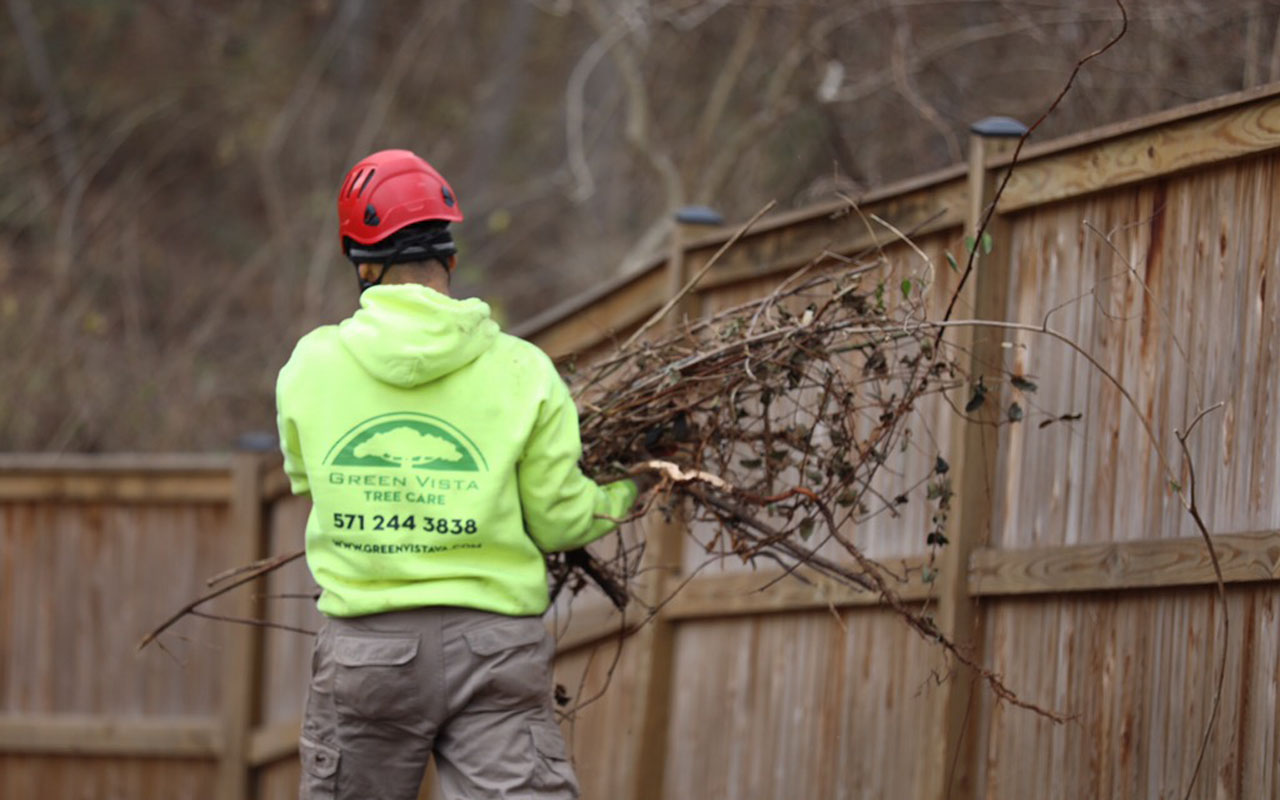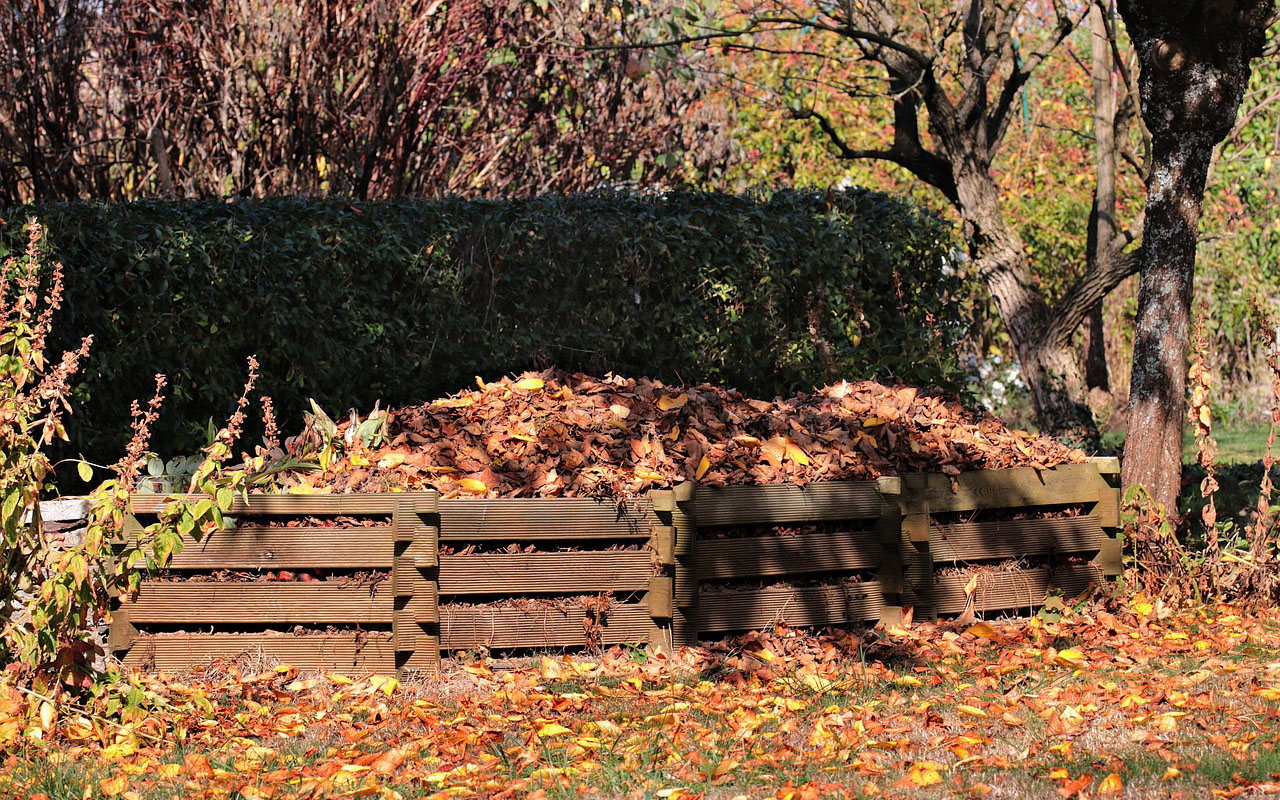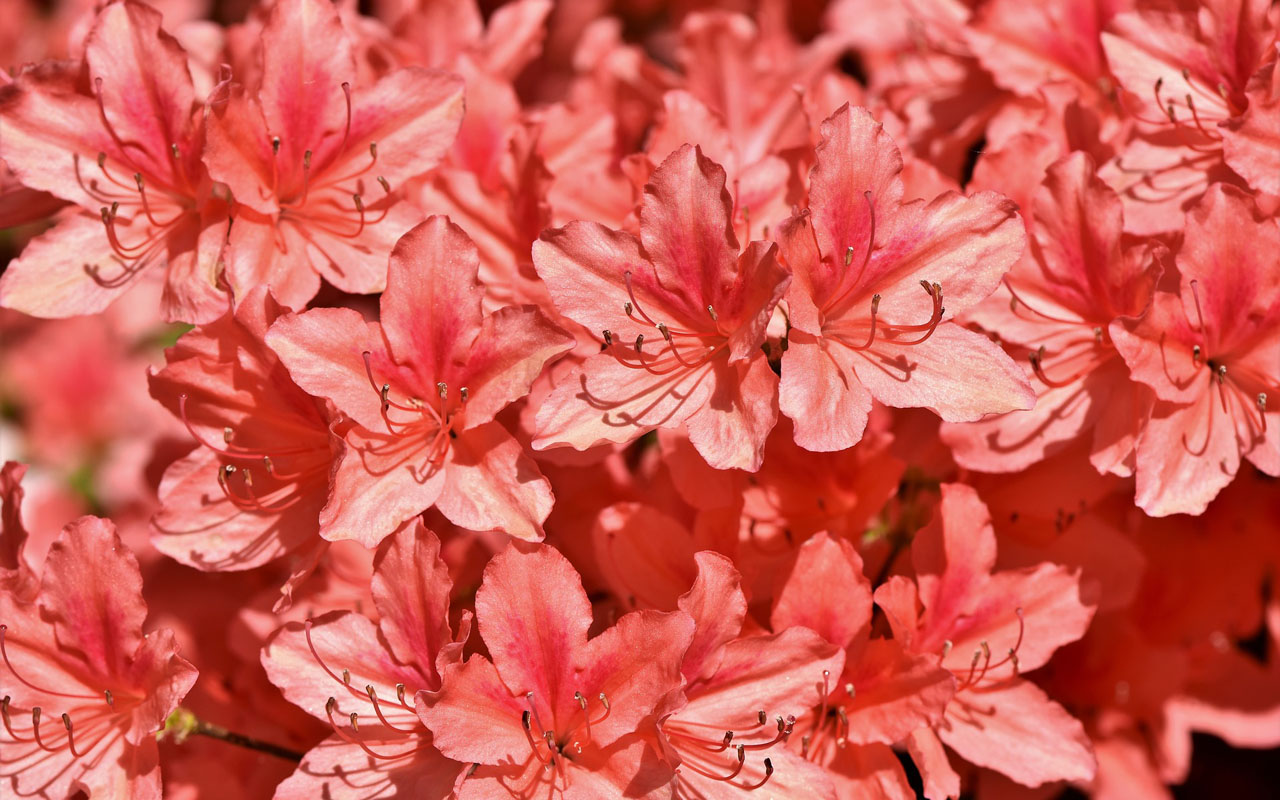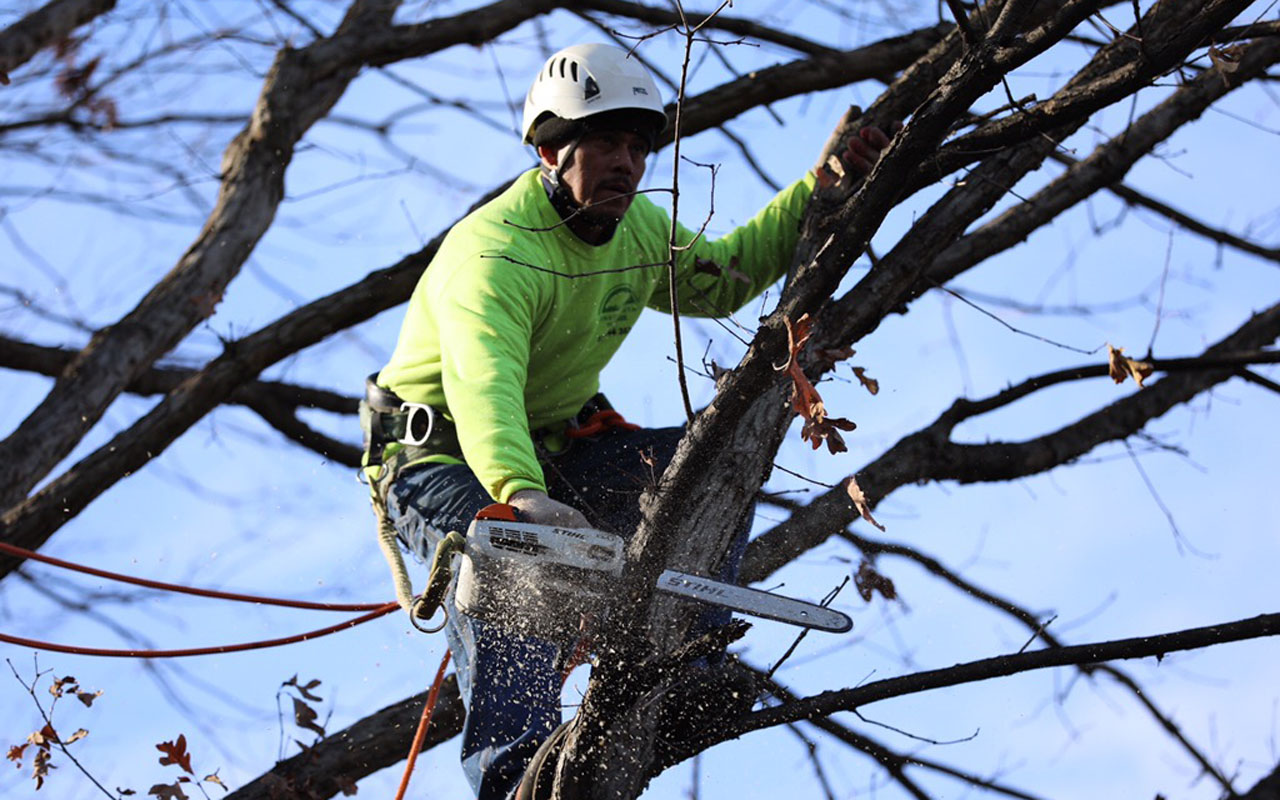Just when you think the northern Virginia winter will never end, spring approaches. Both you and your trees come alive when the temperatures start to rise and the days get longer. But while you can just hang up your parka and turn the heat down, your trees need a little more help to get ready. These spring tree care tips will help you provide the extra boost your trees need.
Prepare Your Trees For Spring
Think of spring tree care as laying a solid foundation for the long growing season ahead. Making growing conditions for your trees as ideal as possible will help your trees to be healthy and ready for flowering, leafing out, growing new branches, warding off pests, and dealing with increased water and nutrient needs.
Here are the things we recommend doing for your trees each spring.
Unwrap Your Trees & Shrubs
The winter protection provided by tree wraps becomes a liability when temperatures rise. You don’t want water to be held close to your trees’ trunks and branches when it warms up, as this makes a perfect microclimate for bacteria and fungi to grow. Nor do you want your plants to cook in the heat!
As soon as nighttime temperatures are above freezing, remove any wrapping and store it for next winter.

Clean Up Winter Debris
Even though you may have cleaned up your garden in preparation for winter, debris from storms and any leftover leaves and fallen branches should be removed as spring arrives. This helps get rid of any overwintering pests that might have found refuge under the debris, as well as disease pathogens that survived the winter. You’ll also have a clean surface for adding mulch and compost, and to show off your spring-flowering bulbs and shrubs. Here’s our 10-step for spring yard cleanup checklist to help you.

Composting fall leaves means benefits for your yard and garden
Add Compost and Mulch For Your Soil
Organic matter improves soil, which means it improves your trees’ health. Over time, compost and mulch naturally break down. This organic matter enters the soil, where it bonds to soil particles. Because of this, organic mulches and compost need to be regularly replenished on the soil’s surface so they can continue to provide nutrients to your plants.
Adding mulch (or, better yet, both compost and mulch) around your trees will also slow down water evaporation and regulate soil temperature. This allows your trees to ease into warm spring weather without any stress from heat or dehydration.
Finally, a nice layer of mulch will keep weeds from sprouting so there’s less competition for available water and nutrients – and less work for you!
Just make sure to apply mulch correctly by following these tips.
Get Ready to Water Your Trees
Warmer weather and the end of dormancy mean your trees need more water to grow.
Run a test of your irrigation system to see where any breaks or clogs may be and fix them before your trees risk heat stress from hot temperatures and dehydration.
If you don’t have an irrigation system, spring is time to check your watering supplies – hoses, spray nozzles, hose-end bubblers, and sprinklers will all come in handy for keeping your trees well-watered.
Flush Away Salts
Spring watering is especially important if you’ve used de-icing products or salt over the winter.
If there is too much salt in your soil, you may find that early spring leaves display salt damage. This usually appears as burnt-looking leaf tips or margins. Regular and lengthy irrigation will dilute the damaging road salt and wash it through the soil, away from tree roots.
You can learn more about salt damage to trees here, and you can find salt-tolerant species information here.

Azaleas are rhododendrons but not all rhododendrons are azaleas.
Choose Spring-Flowering Trees
Spring is also a good time to identify your favorite spring-flowering trees for future planting. Seeing trees in full bloom is much better than relying on photos when you’re choosing a specimen tree or an addition to your garden.
You can read more about when and how to plant trees in Northern Virginia here.
Once you’ve found trees that you like, give us a call. The tree care professionals at Green Vista can tell you more about what a particular tree species needs and the best place to plant it on your property.
Prune Storm Damaged Trees
Take a close look at your trees to see if there’s any winter storm damage, such as broken or hanging branches, or frost cracks. If so, it’s wise to prune or remove those branches as soon as possible to prevent spring-emerging insects and diseases from getting inside and damaging your tree’s health.
If you’re familiar with proper pruning techniques, have the right equipment, and can reach the affected branches from the ground, then go ahead and prune out the damage. If you’re not sure, check this article to see if DIY pruning is the best option for you.
The tree service professionals at Green Vista know how best to prune or remove branches from your trees safely, so don’t hesitate to give us a call!
 Fertilize Your Trees & Shrubs
Fertilize Your Trees & Shrubs
When your trees emerge from dormancy and being flowering and putting out leaves, they may need some additional nutrition to supplement their energy stores.
Spring is an ideal time to fertilize, as warming soil and rainfall help make nutrients available to tree roots. In combination with long-term, soil-improving compost and mulch, targeted fertilization will ensure your garden puts on a brilliant spring show.
Want to know more about your soil? You can get an accurate soil test through Virginia State’s cooperative extension to know exactly what your soil has and what it’s missing. Your tree care professional can then help you implement a plan to improve your soil and your trees’ health.
Spring Tree Care Tips
In summary, here are the things we recommend doing for your trees when spring arrives in northern Virginia.
- Unwrap any trees or shrubs before temperatures rise too far
- Clean up any debris around your trees
- Replenish mulch and add compost
- Check irrigation and begin watering, especially if salt or ice-melt products were used on nearby paved areas
- Prune off any winter-damaged branches
- Fertilize
If you’d like help with any of these spring tree care tasks, or need some advice on how best to keep your trees healthy, please give us a call. We’re always happy to help!
Get helpful tips, local news, inspiring stories, and more delivered right to your inbox every month. Don't miss another issue - join today!





